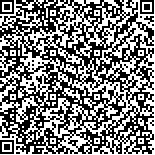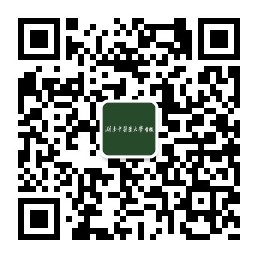| 引用本文: |
李静, 余涛, 齐耀群, 张小容, 戢佳慧, 李汉超.三黄四物汤不同溶剂提取物的抗炎作用研究[J].湖南中医药大学学报,2024,44(11):2024-2031[点击复制] |
|
| |
|
|
| 本文已被:浏览 1530次 下载 737次 |
| 三黄四物汤不同溶剂提取物的抗炎作用研究 |
| 李静,余涛,齐耀群,张小容,戢佳慧,李汉超 |
| (九江学院附属医院, 江西 九江 332000) |
| 摘要: |
| 目的 探索三黄四物汤(SST)不同溶剂提取物的体外抗炎作用及其相关机制,分析其主要成分与抗炎作用的关系,并探索其体内抗炎作用。方法 通过制备三黄四物汤水提物(SSTW)及乙醇提取物(95%乙醇提取物SSTE、50%乙醇提取物SSTWE);采用高效液相色谱法(HPLC)分析其主要成分;通过LPS诱导RAW264.7细胞建立炎症模型,并采用苯酚胶浆法建立大鼠慢性盆腔炎(chronic pelvic inflammatory disease, CPID)模型;使用MTT法检测细胞存活率,Griess法检测NO水平,ELISA法检测PGE2、IL-6、TNF-α水平,Western blot法检测COX-2、iNOS及MAPKs通路、NF-κB通路相关蛋白表达水平,并通过病理切片观察大鼠子宫病理改变。结果 SSTWE 0.78-25 μg/mL组与正常组相比,细胞存活率无显著差异(P>0.05)。SSTWE 12.5 μg/mL抗炎作用弱于SSTE而类似于SSTW,SSTWE 25 μg/mL抗炎作用强于SSTW而类似于SSTE。SSTW、SSTE和SSTWE均明显降低LPS诱导的RAW264.7细胞iNOS和COX-2蛋白表达(P<0.05);SSTWE明显降低LPS诱导的RAW264.7细胞ERK磷酸化蛋白表达、IκB-α磷酸化蛋白表达及细胞核中p65蛋白表达,同时增加IκB-α总蛋白表达及细胞质中p65蛋白的表达水平(P<0.05)。SST明显抑制CPID大鼠血清TNF-α和IL-6含量(P<0.05),减轻盆腔局部组织粘连,改善子宫病理形态。结论 三黄四物汤有显著体外抗炎作用,其机制均与炎症通路MAPKs和NF-κB有关;其不同提取物抗炎作用及细胞毒性不同,可能与当归成分有关;SST对大鼠CPID有显著抗炎作用,可作为慢性盆腔炎的候选药物。 |
| 关键词: 三黄四物汤 炎症 慢性盆腔炎 信号通路 提取物 |
| DOI:10.3969/j.issn.1674-070X.2024.11.012 |
| 投稿时间:2024-02-20 |
| 基金项目:江西省教育厅科学技术青年项目(GJJ211841);江西省卫生健康委员会科技计划(SKJP220219734);江西省中医药管理局科技计划(2022B1032) |
|
| Anti-inflammatory effects of extracts from Sanhuang-Siwu-Tang in different solvents |
| LI Jing, YU Tao, QI Yaoqun, ZHANG Xiaorong, JI Jiahui, LI Hanchao |
| (Affiliated Hospital of Jiujiang University, Jiujiang, Jiangxi 332000, China) |
| Abstract: |
| Objective To explore the in vitro anti-inflammatory effects and related mechanisms of different solvent extracts of Sanhuang-Siwu-Tang (SST), analyze the relationship between its main components and anti-inflammatory effects, and investigate its in vivo anti-inflammatory effects. Methods SST water extract (SSTW), as well as 95% ethanol extract (SSTE) and 50% ethanol extract (SSTWE) were prepared. High-Performance Liquid Chromatography (HPLC) was used to analyze the main components. An inflammatory model was established by inducing RAW264.7 cells with LPS, and a rat model of chronic pelvic inflammatory disease (CPID) was established by phenol mucilage method. Cell viability was determined by MTT; NO level was measured by Griess; PGE2, IL-6, and TNF-α levels were examined by ELISA; COX-2, iNOS, MAPKs, and NF-κB protein expressions were measured by Western blot; pathological changes in the rat uterus were observed through pathological sections. Results There was no significant difference in cell viability between the SSTWE groups at various concentrations from 0.78 to 25 μg/mL and normal group (P>0.05). The anti-inflammatory effects of SSTWE at 12.5 μg/mL were weaker than those of SSTE but similar to those of SSTW, while the anti-inflammatory effects of SSTWE at 25 μg/mL were stronger than those of SSTW but similar to those of SSTE. SSTW, SSTE, and SSTWE all significantly reduced iNOS and COX-2 protein expressions in LPS-induced RAW264.7 cells (P<0.05). SSTWE significantly reduced the protein expressions of p-ERK, p-IκB-α, and nuclear p65 in LPS-induced RAW264.7 cells, while increasing IκB-α total protein expression and cytosolic p65 protein expression (P<0.05). SST significantly lowered serum TNF-α and IL-6 levels in CPID rats (P<0.05), reduced local pelvic tissue adhesion, and improved pathological morphology of the uterus. Conclusion SST has significant in vitro anti-inflammatory effects, and its mechanisms are related to the inflammatory pathways of MAPKs and NF-κB. Its different extracts have varying anti-inflammatory effects and cytotoxicity, possibly related to the components of Danggui (Radix Angelicae Sinensis). Moreover, SST has significant anti-inflammatory effects on CPID in rats and can be considered as a candidate drug for CPID. |
| Key words: Sanhuang-Siwu-Tang inflammation chronic pelvic inflammatory disease signaling pathway extract |
|

二维码(扫一下试试看!) |
|
|
|
|




